Can Athletes Benefit from Adversity?
“Tough times don’t last, tough people do”
– Robert Schuller
Adversity is known to be one of the most powerful forces in life. It can bring out the best or the worst in you [1]. Either you can pick yourself up and be the best version of yourself, or you can fall flat on your face and be bitter about it for the rest of your life. It is solely dependent upon how you handle what life throws at you. Everyone is known to experience some sort of adversity in life. The level and impact may differ, but stress and challenges have been known to be part of everyone’s life. It is how you perceive these adversities will determine the future course of your life.
In India, when you think of cricket, you think of Virat Kohli. The captain of the Indian Cricket team and one of the best batsmen in the world. In the early hours of 19th December 2006, Virat Kohli lost his father. The same morning, he had a Ranji Trophy (a domestic first-class cricket championship played in India) match to play. His coach gave him a choice and assured him that he’d understand if Virat Kohli could not make it for the match. Eighteen-year-old Kohli made a brave decision and played the match despite being faced by a massive tragedy. This is an example of how Virat Kohli managed to handle responsibility, despite facing adversity, early on in life. Today, he is one of the best and the most revered cricketers in the world [2].
Wilma Glodean Rudolph was an African American sprinter. As a child, she was diagnosed with polio, and contracted scarlet fever and double pneumonia. Doctors said that she would never walk again. She could not walk without an orthopaedic shoe until the age of 11 years. Cut to the 1960 Rome Olympics, she went on to break three world records in the 100m, 200m, and 4x100m relay [3].
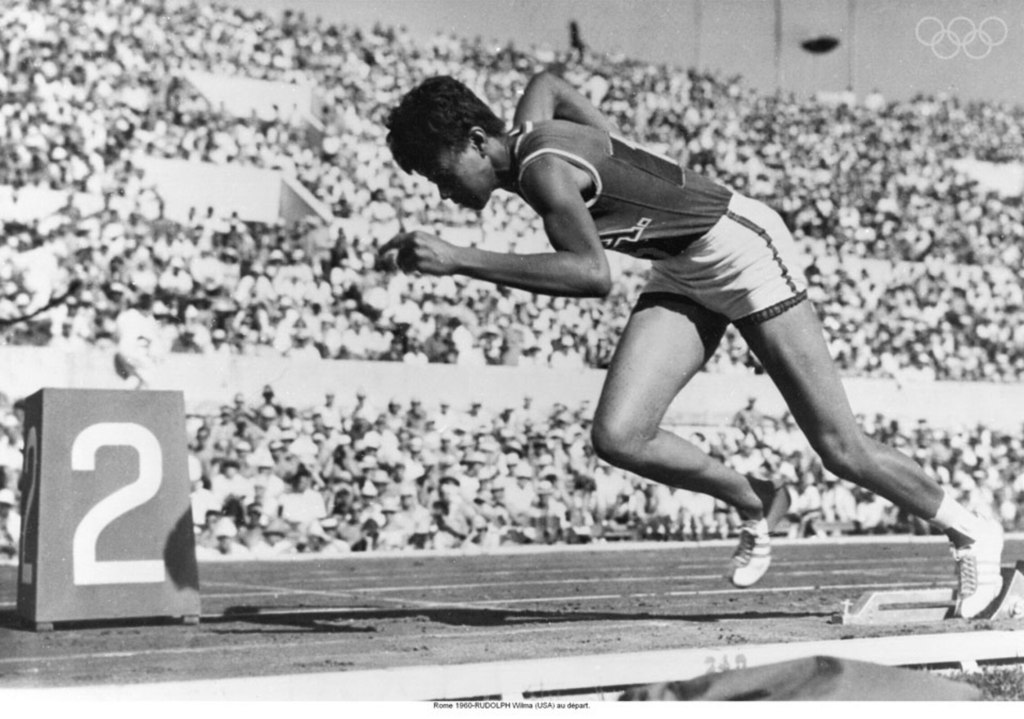
(Picture Courtesy: olympic.org)
Terrorists around the world face adversities early on in life and choose a path of terror and destruction to justify their circumstances. According to research, Olympic champions have been known to face some sort of adversity in their childhood or sometime during their life [4][5]. One can either use the adverse circumstances to their advantage to contribute to something great, or they can be equally successful in destroying the world. Anger can cause vengeance. It is up to individuals whether they take the adverse circumstances in their stride and rise above their traumatic circumstances, or let it destroy them. Adversity is not something which we have control over, life is not a bed of roses, one can either go against the tide or accept their circumstances.
Both Virat Kohli and Wilma Rudolph chose to accept their circumstances and turn adversity into an advantage.
Adversity can be defined as “a difficult or unlucky situation or event” [6] and “a state or instance of serious or continued difficulty or misfortune” [7]. The question lies in how certain athletes, despite facing adversity in their lives, still go on to become the best athletes in the world?
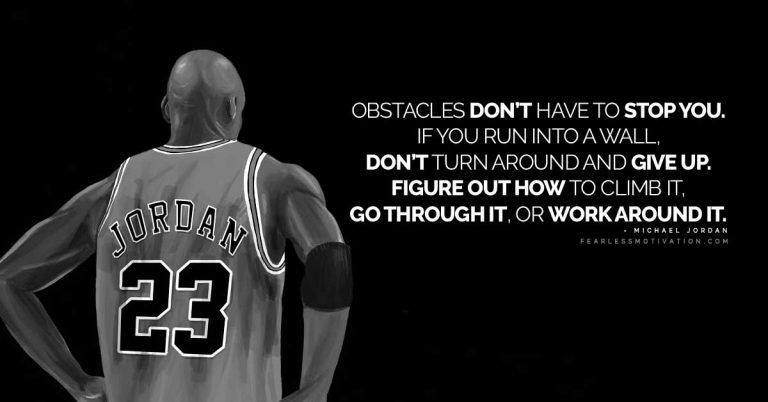
(Picture Courtesy: fearlessmotivation.com)
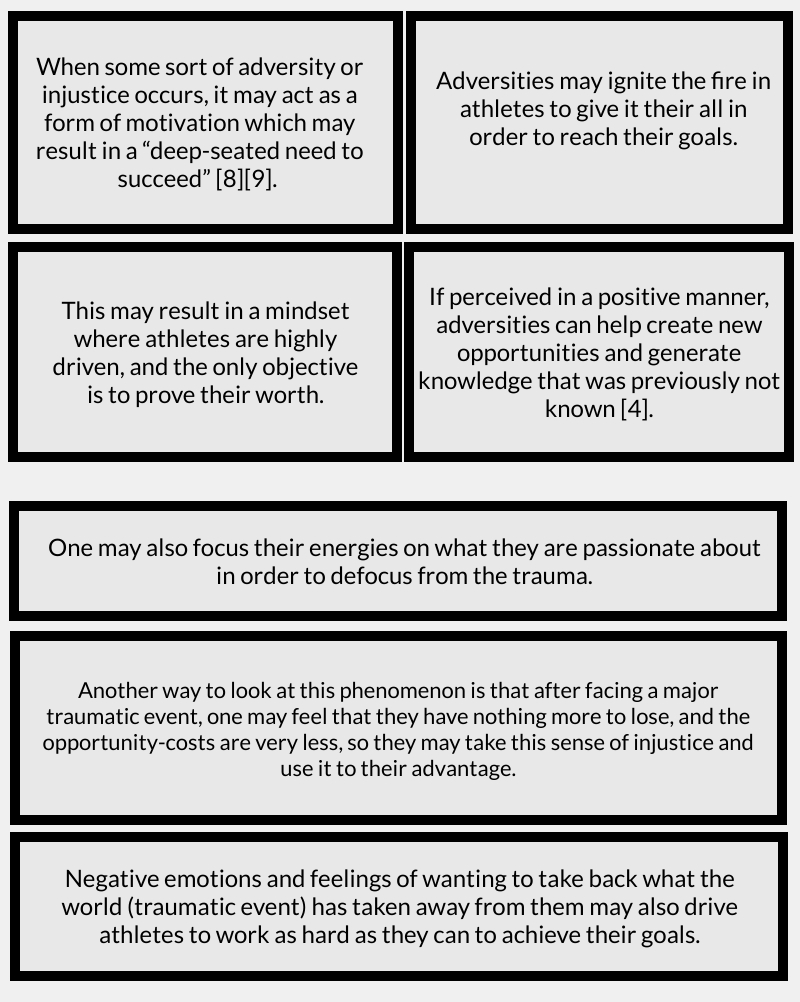
Along with constantly pushing themselves to their maximum limit and moving out of their comfort zone, athletes need to develop the ability to handle the enormous pressures of competing at high levels [10]. That is where their ability to deal with adversity, setbacks and challenges can be used to their advantage. Sport psychologist, Dr. Mustafa Sarkar talks about how negative events may have a “silver lining”. He elaborates on how individuals who have experienced adversities in their lives may actually “reap the rewards” in the future [11]. They will be better equipped to handle pressure, and not consider situations to be extremely challenging, given that they have faced more demanding situations in the past, which they have successfully managed to overcome. The traumatic events may ignite the fire in athletes to succeed at any cost and it also provides them with the strength to fight against future setbacks. This is how negative emotions/circumstances can be used to achieve a positive goal.
“Adversity is the Fuel of Greatness. If there is no Adversity, there is no Growth”
According to Haudan (2016), “Adversity is the Fuel of Greatness. If there is no adversity, there is no growth”. This notion has been supported by a number of researchers, who believe that athletes have the potential to benefit from difficulty [12][13]. Also known as ‘growth following adversity’, individuals may show positive changes post facing adversities or traumatic events, where some adversities may actually be beneficial and lead to growth and development [5]. A number of terms (given by different researchers) have been coined for this phenomenon, including perceived benefits, positive changes in outlook, post-traumatic growth, stress-related growth and adversarial growth [13].
The term ‘Adversarial Growth’ can be used to define the positive changes that occur due to adversities or difficult life circumstances [14]. Some of the greatest athletes in the world have benefitted from traumatic events faced during early childhood or sometime during their life [8], which can be non-sport related – personal events such as parental divorce, broken homes, physical or mental abuse, poverty or accidents. Athletes can also face sport-related adversities such as serious injuries, non-selection, burnout, unexpected failures and so on [4][5][8][10][13].

It is inspiring to watch how Para-Athletes overcome their adversities to achieve success at the highest levels.
(Picture Courtesy: AMI)
“Talent needs Trauma”
According to Collins and MacNamara, “Talent needs Trauma” [4][15] but how the traumatic event is perceived and managed is extremely crucial. Most individuals who experience adversity are not successful at the highest levels [12]. Athletes need to be supported through the challenges they face so that they can cope and overcome the stressors, and use them to their advantage.
In order to fuel the chances of success, inducing adversity in an athlete would be unethical and wrong. On the contrary, if an athlete has gone through adversity, then the environment around him or her needs to be supportive enough to help convert these adversities into positive outcomes in order to enhance their performance [4][5]. In no manner does it mean that adversity is all one needs to be successful. If that were the case, then most individuals would have been achieving success at the highest levels

American gymnast, Simone Biles spent her childhood in foster care after her biological mother was unable to care for her. [16].
(Photo Courtesy: Rebecca Blackwell / AP)

British tennis player Andy Murray survived a massacre in 1996, in his school, at the age of 8 [15].
(Photo Courtesy: Tennis365)

Canadian speed skater and cyclist Clara Hughes, the first-ever Olympian to win multiple medals in both the summer and winter games, is another story of surpassing trauma to be the best in the world. Before reaching great heights, she was heavily into drinking and drugs along with living with an alcoholic father as a teenager [17].
(Photo Courtesy: olympic.ca)
To be the best in any field in life will be dependent upon many factors. One of the factors which could be of primary interest (as seen from most examples) for success in sportspersons is the adversity that they have faced in life.
The African Americans in the United States of America lived through some very harsh and traumatic times. Yet, a lot of them went on to make their mark through sport or music. Muhammad Ali, an American boxer is a great example of how one’s life challenges can help shape them into the best version of themselves. His adversities went far beyond the boxing ring, having spent years in prison [18], still, he went on to become the best boxer in the world. The other crucial contributing factor is that as athletes learn to cope with challenges, they need to be placed in a nurturing environment that provides them with a conducive support system.
Middle- and long-distance running are known to be one of the toughest races [19]. Kenya and Ethiopia, along with other African countries are known to produce the best middle- and long-distance athletes in the world [20][21]. A lot of athletes from these countries come from deprived backgrounds. Acute poverty can be an adversity, and desperation is a huge driver. Developed countries like the United States of America and Europe have more technical inputs, infrastructure and facilities for their athletes, yet the African’s somehow emerge victorious in these events.

Like the Kenyans, Indian athletes can be an equally powerful force, but unfortunately, they lack the basic support along with knowledge, facilities and infrastructure at the grass-root level. According to research, it is the poor that win the medals for India [22]. Most Indian athletes face tremendous adversity, but they have not been able to convert their adversity into success at the world level.
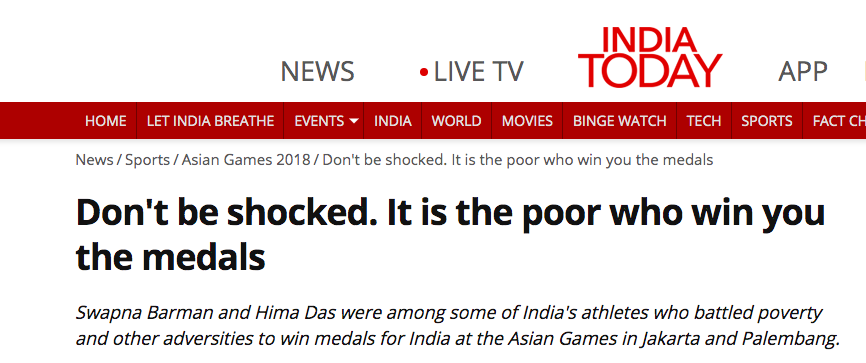
Unfortunately, Indian athletes are restricted by the system they find themselves in. The Indian Athletic Federation and The Kenyan Athletic Federation are both at very nascent levels. Yet, Kenyan athletes are winning medals and no Indian athlete (other than Abhinav Bindra – who built his own support system [23]) has won an Olympic gold (individual event) since Independent India was formed [24][25]. Even though genes are a major factor contributing to the success of Kenyan athletes [21], another reason that can be attributed to this is that Kenyan athletes, despite the hardships they have faced, have gone out into the world, competed, found component coaches and agents that have helped them to rise to the top. To date, no Indian athlete has followed through with the same process. Indian athletes perform well to a certain extent but due to several factors, are still unable to find a spot among the best athletes of the world. This is where the need for a nurturing environment and correct support system comes into play. Adversity alone cannot lead to success, the athletes need to know how to overcome adversity and use it to their advantage, for which they require immense support.
“Abhinav Bindra, won an Olympic gold in Beijing, 2008, despite the system, not because of it.” – Joaquim Martin Carvalho (Former India Hockey player and Coach)

Swapna Barman, an Indian heptathlete, was born below poverty line, her father who was a van-puller was unable to earn for the family after he suffered a cerebral attack. Her mother had to work as a daily labourer at tea gardens to make ends meet [22][26]. She won the gold medal at the 2018 Asian Games and the 2017 Asian Athletics Championships.
(Photo Courtesy: The Economic Times)

After losing his parents during the Partition of India, at a very young age, Milkha Singh managed to reach India from Pakistan in a cross-border train carrying refugees. He went on to become the best sprinter in India and held the Indian National record for more than 40 years [27][28].
(Photo Courtesy: The Olympians)
German Coach Dr. Otto Peltzer, who himself was a world champion and world record holder in 800m and 1,500m advised Milkha Singh to compete in dozens of races for two seasons in the European circuit before the Olympics [29]. It was this opportunity of competing at the International level that made Milkha realize his potential. Further, he went on to be the favourite at the Rome Olympics in 1960 [30].
Courtesy of the British High Commission, India hired Steve Ovett’s coach Harry Wilson for two years to prepare India’s middle- and long-distance athletes. He discovered a 5000 meters runner, Bahadur Prasad who according to him was running well but was unable to break the 14 minutes barrier due to the high-temperature conditions and the fact that he was training and competing with no competition. Harry Wilson then invited Bahadur to England in 1991 and exposed him to 4 to 5 high-level competitions at cooler temperatures. Bahadur ran as a guest in the UK National Championships and clocked 13.29.71 to finish second behind Jack Buckner. What is amazing to note is that this 1991 record still stands in India [27]. Residing in a small village in India, Bahadur Prasad belonged to an economically weaker section. He had parents who had never been to school. He faced adversity, found the right support system, and turned his adversity into advantage and success [31].
In India, the North-Eastern part of the country is most deprived of sport facilities and growth chances. Yet, a number of athletes are being discovered and there has been a lot of talent which has emerged in the recent years from that geographical region.
Mary Kom is a great example of an athlete who overcame all the hardships to achieve success at the highest levels. She is the only woman in the world to have become the World Amateur Boxing champion 6 times and only woman to have won a medal in each one of the first 7 World Championships. Despite coming from the most deprived region of the country, along with battling poverty, she is the only boxer in the world to win 8 World Championship medals [30].
“What doesn’t Kill you makes you Stronger”
The old saying by German philosopher Friedrich Nietzsche, ‘What doesn’t kill you makes you stronger’ can be used to talk about athletes who have faced adversity, and yet, have gone on to achieve great success in their respective fields. Researcher Mark Seery talks about how adversity can help individuals develop a ‘psychological immune system’ which helps them cope with future hardships. He further states that those who have no experience with dealing with adversity may have a more difficult time dealing with future challenges. If individuals have surpassed certain traumatic events early on in life, they will be better equipped to handle future stressors [31].
Benefitting from Difficulty goes beyond the Sporting Field
Author, J.K Rowling spoke about the benefits of failure, stating how ‘rock bottom became the solid foundation on which she rebuilt her life’. She stated that she was the ‘biggest failure’ she knew. Living in a cramped apartment with her daughter, with no job or money, she fell into depression and even considered committing suicide [32]. Fast forward to the present day, she is a successful author, film and television producer, screenwriter and philanthropist.
“It is impossible to live without failing at something, unless you live so cautiously that you might as well not have lived at all – in which case, you fail by default.” – J.K. Rowling
“Turn your Wounds into Wisdom”
Oprah Winfrey, a media executive, actress, talk show host, television producer, and philanthropist, overcame years of abuse, poverty, and neglect to become one of America’s most influential people and the first African American billionaire [33]. She learned to grab the opportunities that were thrown at her. She was resilient, and found a way to not only overcome all the trauma that she had faced early on in life, but managed to use what she had learned from those unfortunate circumstances, and develop and grow as a result of those traumatic events. She turned her life around and become extremely successful. She stated, “Turn your wounds into wisdom”, and spoke about how living in poverty made the experience of creating and building success more rewarding [34].

“Know that now is only a moment, and that if today is as bad as it gets, understand that by tomorrow, today will have ended.”
– Shane Koyczan
References
[1] Haudan, Jim. “Adversity Is the Fuel of Greatness.” Inc.com, 7 Dec. 2016, http://www.inc.com/jim-haudan/adversity-is-the-fuel-of-greatness.html.
[2] NDTVSports.com. “Virat Kohli Reveals Why Father’s Death Did Not Deter His Passion For Cricket | Cricket News.” NDTVSports.com, 10 May 2016, sports.ndtv.com/cricket/virat-kohli-reveals-why-father-s-death-did-not-deter-his-passion-for-cricket-1484267.
[3] “Wilma RUDOLPH.” International Olympic Committee, http://www.olympic.org/wilma-rudolph.
[4] Sarkar, Mustafa, et al. “What doesn’t kill me…: Adversity-related experiences are vital in the development of superior Olympic performance.” Journal of Science and Medicine in Sport, vol. 18, no. 4, 2015, pp. 475-479.
[5] Howells, Karen, and David Fletcher. “Sink or swim: Adversity- and growth-related experiences in Olympic swimming champions.” Psychology of Sport and Exercise, vol. 16, 2015, pp. 37-48.
[6] “ADVERSITY | Meaning in the Cambridge English Dictionary.” Cambridge Dictionary | English Dictionary, Translations & Thesaurus, dictionary.cambridge.org/dictionary/english/adversity.
[7] “Definition of ADVERSITY.” Dictionary by Merriam-Webster: America’s Most-trusted Online Dictionary, http://www.merriam-webster.com/dictionary/adversity.
[8] Sarkar, Mustafa, and David Fletcher. “Adversity-related experiences are essential for Olympic success: Additional evidence and considerations.” Progress in Brain Research, 2017, pp. 159-165.
[9] Howle, Timothy C., and Robert C. Eklund. “On elite and super-elite Great British athletes: Some theoretical from Hardy et al.’s (2017) findings.” Progress in Brain Research, 2017, pp. 121-125
[10] Hardy, Lew, et al. “Great British medalists.” Progress in Brain Research, 2017, pp. 1-119.
[11] Collins, Tim. “Athletes Who Have Experienced Adversity Perform Better Under Pressure.” Mail Online, 25 July 2017, http://www.dailymail.co.uk/sciencetech/article-4728212/Athletes-experienced-adversity-perform-better.html.
[12] Galli, Nick, and Justine J. Reel. “Can Good Come from Bad? An Examination of Adversarial Growth in Division I NCAA Athletes.” Journal of Intercollegiate Sport, vol. 5, no. 2, 2012, pp. 199-212.
[13] Howells, Karen, et al. “Can athletes benefit from difficulty? A systematic review of growth following adversity in competitive sport.” Progress in Brain Research, 2017, pp. 117-159.
[14] “Adversarial Growth in Olympic Swimmers: Constructive Reality or Illusory Self-Deception?” Journal of Sport and Exercise Psychology, vol. 38, no. 2, 2016, pp. 173-186.
[15] Allan, Veronica. “The Surprising Role of Childhood Trauma in Athletic Success.” The Conversation, 9 Dec. 2018, theconversation.com/the-surprising-role-of-childhood-trauma-in-athletic-success-107404.
[16] “‘My Parents Saved Me?: Simone Biles Tearfully Opens Up About Being Adopted.” TODAY.com, 11 Apr. 2017, http://www.today.com/parents/my-parents-saved-me-simone-biles-tearfully-opens-about-being-t110260.
[17] “The Surprising Role of Childhood Trauma in Athletic Success: U of T Expert.” University of Toronto News, 10 Dec. 2018, http://www.utoronto.ca/news/surprising-role-childhood-trauma-athletic-success-u-t-expert.
[18] “Muhammad Ali, the Boxer Who Changed the World for Black America.” Australian Financial Review, 14 Sept. 2017, http://www.afr.com/life-and-luxury/arts-and-culture/muhammad-ali-the-boxer-who-also-fought-the-racism-in-his-country-20170912-gyfzgr.
[19] “True Grit.” Runner’s World, 6 May 2013, http://www.runnersworld.com/advanced/a20805434/true-grit/.
[20] “How One Kenyan Tribe Produces The World’s Best Runners.” NPR.org, 1 Nov. 2013, http://www.npr.org/sections/parallels/2013/11/01/241895965/how-one-kenyan-tribe-produces-the-worlds-best-runners.
[21] Fisher, Max. “Why Kenyans Make Such Great Runners: A Story of Genes and Cultures.” The Atlantic, 17 Apr. 2012, http://www.theatlantic.com/international/archive/2012/04/why-kenyans-make-such-great-runners-a-story-of-genes-and-cultures/256015/.
[22] “Don’t Be Shocked. It is the Poor Who Win You the Medals.” India Today, 31 Aug. 2018, http://www.indiatoday.in/sports/asian-games-2018/story/don-t-be-shocked-it-is-the-poor-who-win-you-the-medals-1328663-2018-08-31.
[23] Singh, Bhupinder. “10 Years Ago, Abhinav Bindra Shot His Way To An Olympic Gold And Created History.” Indiatimes.com, 11 Aug. 2018, http://www.indiatimes.com/sports/10-years-ago-abhinav-bindra-shot-his-way-to-an-olympic-gold-and-created-history-351057.html.
[24] “Olympic Medals – History, Design & Photos.” International Olympic Committee, 19 Dec. 2019, http://www.olympic.org/olympic-medals.
[25] Balachandran, Manu. “India Has Won Just 28 Olympic Medals over a Century. It Now Aims to Win 50 in Just 8 Years.” Quartz India, 22 Sept. 2016, qz.com/india/787153/india-has-won-just-28-olympic-medals-over-a-century-it-now-aims-to-win-50-in-just-8-years/.
[26] PTI. “Swapna ? Living Her Father’s Dream.” The Hindu, 11 July 2017, http://www.thehindu.com/sport/athletics/swapna-living-her-fathers-dream/article19259026.ece.
[27] “When Singh’s Father He Fell, He Pleaded with Singh to Run for Safety: “Bhaag Milkha, Bhaag.”.” Home – DAWN.COM, http://www.dawn.com/in-depth/partition/story/milkha-singh/.
[28] “Milkha Singh: Running from Pakistan, from Demons and Rivals on the Track.” The Olympians, 25 Feb. 2017, theolympians.co/2015/11/11/milkha-singh-running-from-pakistan-from-demons-and-rivals-on-the-track/.
[29] Nachappa, Ashwini. “Chasing the medal mirage.” The Edge, 5 Mar. 2017, http://www.asfedge.org/html/chasing_the_medal_mirage.html.
[30] Shanker, Saurabh. “When Milkha Singh Came Agonisingly Close to an Olympic Medal.” Olympic Sports, Athletes, Videos & More | Olympic Channel, 13 Aug. 2019, http://www.olympicchannel.com/en/stories/news/detail/how-a-fraction-of-a-second-left-milkha-singh-stranded-on-the-cusp-of-glory/.
[31] Ali, Qaiser M. “Two Sides Of The Net.” https://www.outlookindia.com/, 19 Aug. 2016, http://www.outlookindia.com/magazine/story/two-sides-of-the-net/297742.
[30] Ude, Ulan. “Mary Kom Assured of 8th World Championships Medal, Reaches 51kg Semi-final in Ulan Ude.” India Today, 10 Oct. 2019, http://www.indiatoday.in/sports/other-sports/story/mary-kom-womens-world-boxing-championships-8th-medal-most-successful-51kg-semi-final-1607827-2019-10-10.
[31] Landro, Laura. “Study Finds Adversity Does Make Us Stronger.” WSJ, 18 Oct. 2010, http://www.wsj.com/articles/SB10001424052702303496104575560261828332840.
[32] “Failure. Rejection. Success: The J. K. Rowling Story.” Year On | Gap Year and Gap Semester Programs, 15 Jan. 2015, http://www.yearon.com/blog/jk-rowling-failure.
[33] Eum, Jennifer. “How Oprah Went From Talk Show Host To First African-American Woman Billionaire.” Forbes, 2 Oct. 2014, http://www.forbes.com/sites/jennifereum/2014/09/29/how-oprah-went-from-talk-show-host-to-first-african-american-woman-billionaire/#c26952f6163f.
[34] Street, Elizabeth. “Overcoming Obstacles: What Oprah Winfrey Learned From Her Childhood of Abuse.” Learning Liftoff, 7 Jan. 2015, http://www.learningliftoff.com/overcoming-obstacles-what-oprah-winfrey-learned-from-her-abusive-childhood/.
[35] Fletcher, David, and Mustafa Sarkar. “A grounded theory of psychological resilience in Olympic champions.” Psychology of Sport and Exercise, vol. 13, no. 5, 2012, pp. 669-678.
[36] Morgan, Paul B., et al. “Understanding team resilience in the world’s best athletes: A case study of a rugby union World Cup winning team.” Psychology of Sport and Exercise, vol. 16, 2015, pp. 91-100.
[37] Coutu, Diane. “How Resilience Works.” Harvard Business Review, 1 May 2002, hbr.org/2002/05/how-resilience-works.
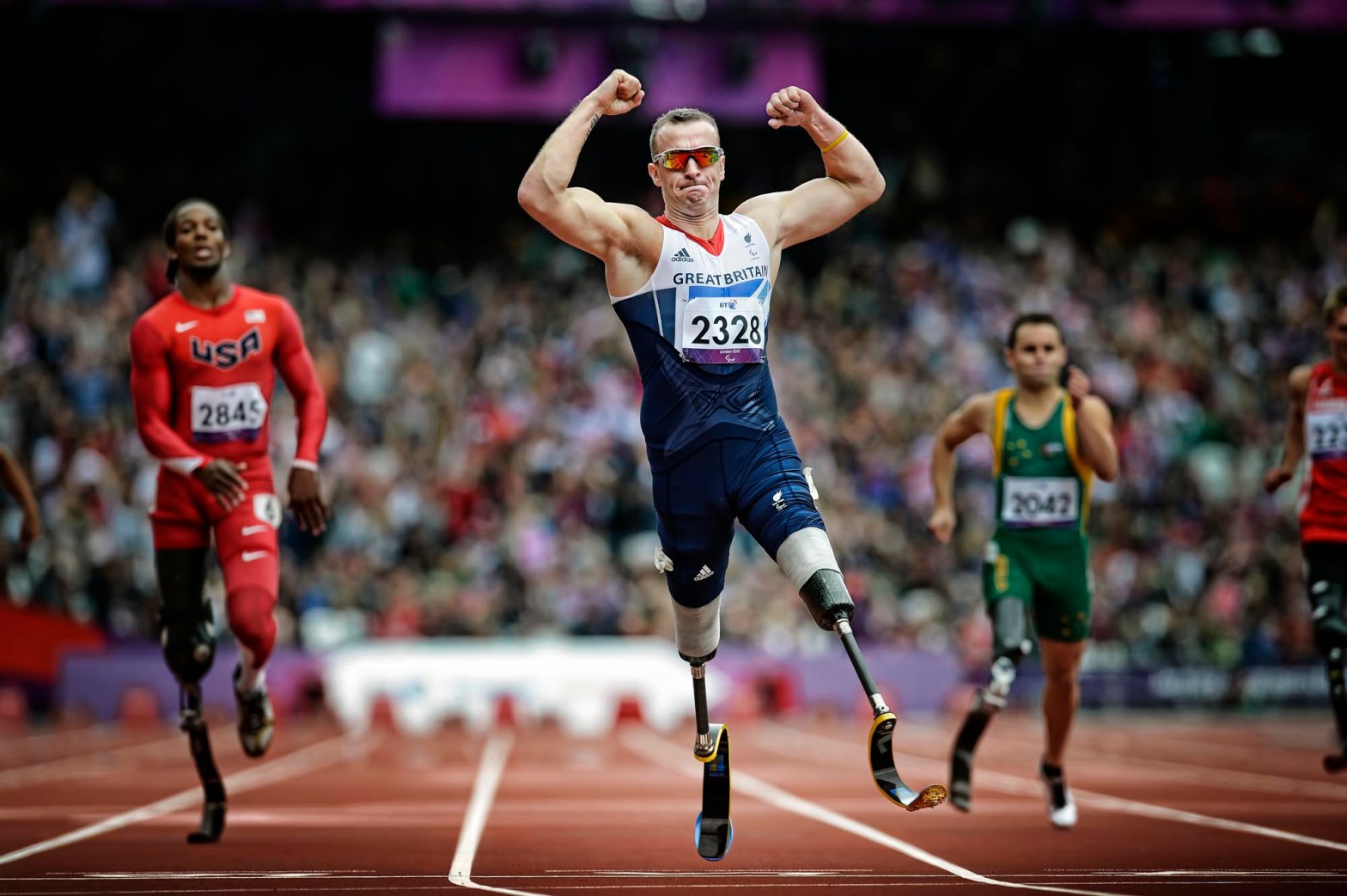
So well written and intriguing.
LikeLiked by 1 person
Thank you so much for your feedback!
LikeLike
So well written and intriguing. Amazing work.
LikeLiked by 1 person
What an empowering, energizing ,exhilarating and encouraging article.Totally loved the spirit of reading especially at this time of the year and the beginning of new year.
LikeLiked by 1 person
Thank you so much for your encouraging words!
LikeLike
Amazing read!
LikeLiked by 1 person
Thank you!
LikeLike
Well written.
LikeLiked by 1 person
Thank you!
LikeLike
V. Well thought and researched on . I run marathons and can relate to this . Recently Hima Das also proved your theory right .
God bless and best wishes .
LikeLiked by 1 person
Thank you so much! So glad to hear that you could relate to the article. So much potential for our Indian athletes, hope to see a change in the way the system works so our athletes can achieve great heights.
LikeLike
V. Well researched and well written ! 😊😊I agree with you Gayathri on this . For eg : the runner hima das also made India proud . I can relate with this story as I also run marathons .
LikeLiked by 1 person
Whatever help we can give we will not hesitate
LikeLiked by 1 person
🙂
LikeLike
Hi Gayatri. Very well researched and articulated.
LikeLiked by 1 person
Thank you so much!
LikeLike